DIY Moon Garden
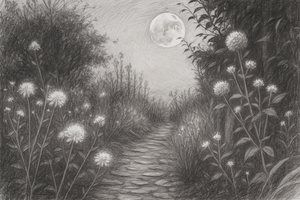
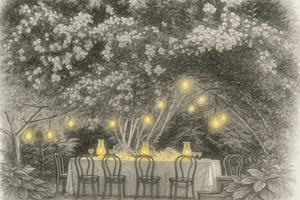
Introduction
Most gardens are designed to shine in daylight—but what about after dark? A moon garden is a thoughtful planting space built for nighttime enjoyment. By using white flowers, silver-toned foliage, and highly fragrant blooms, you can transform even a small corner of your yard into a peaceful, glowing oasis. Add in a bench, some solar lighting, or even a few reflective accessories, and you’ve created a magical spot to unwind after sundown. This project is perfect for anyone who wants to enjoy their garden in cooler evening hours while attracting moths, night-flying pollinators, and even the occasional owl or bat.

Materials Needed
- White- or silver-toned plants (see list below)
- Compost or organic soil amendment
- Shovel, trowel, and rake
- Natural mulch (bark, straw, or pine fines)
- Garden bench, chair, or hammock
- Optional: solar path lights, glow-in-the-dark pebbles, or white ceramic pots
- Optional: trellis or fence to reflect moonlight
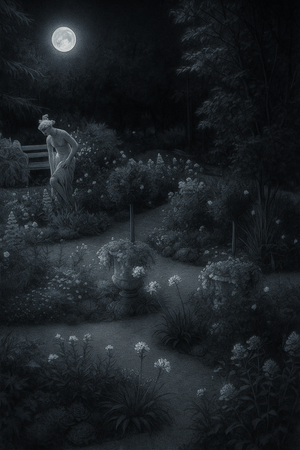
Step-by-Step Instructions
1. Choose your location: Select a spot that you can easily access in the evening - near a patio, along a walking path, or visible from a bedroom or kitchen window. Ideally, pick a location that receives partial sun during the day but feels calm and shaded at night. A view of the actual moon is a bonus, but not required.
2. Prepare the area: Clear weeds, debris, and compacted soil. Mix in compost or soil amendments as needed, and level the surface. If your moon garden will include a seating area, make sure the ground is stable and comfortable for chairs, stones, or hammocks.
3. Arrange your layout: Start by placing your focal points: a small bench, hammock, or a large reflective object like a white urn or glazed pot. Add solar lights, glow stones, or uplighting if desired. Use curves or gentle angles in your path or bed shape to create a soft, flowing feel.
4. Plant with contrast in mind: Use white-flowering and silver-foliage plants to build contrast against the surrounding greenery. Place taller varieties like Hydrangea ‘Incrediball’ or Artemisia ‘Powis Castle’ in the back, mid-sized plants like Phlox paniculata ‘David’, Shasta Daisy, or Lamb’s Ear in the middle, and low-growing accents like Dusty Miller or Sweet Alyssum at the front or along edges. The key is to create layered texture that glows under low light.
5. Add scent and subtle movement: Choose plants that release fragrance in the evening like Evening Primrose, Moonflower Vine, or Nicotiana. Incorporate ornamental grasses or ferns for movement that catches the breeze and moonlight.
6. Mulch and maintain: Mulch the area to retain moisture and highlight plant forms against a dark backdrop. Water regularly as new plants get established, and trim faded blooms to encourage continuous flowering.
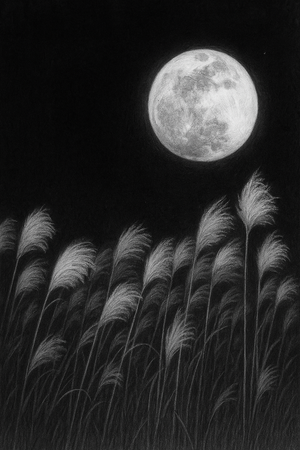
Best Plants for a Moon Garden
These selections offer evening glow, strong fragrance, or reflective beauty:
- Hydrangea arborescens ‘Incrediball’: Large white blooms that glow under moonlight
- Phlox paniculata ‘David’: Bright white summer flowers with a sweet scent
- Artemisia ‘Silver Mound’ or ‘Powis Castle’: Lacy, silver foliage for contrast
- Shasta Daisy (Leucanthemum x superbum): Classic white daisy blooms with strong visual presence
- Lamb’s Ear (Stachys byzantina): Velvety silver leaves perfect for edging
- Evening Primrose (Oenothera biennis): Yellow blooms open at dusk and attract moths
- Sweet Alyssum (Lobularia maritima): Low-growing, honey-scented white flowers
- Dusty Miller (Senecio cineraria): Silvery-white foliage that stands out in low light
- Flowering Tobacco (Nicotiana alata): Evening fragrance and tubular white flowers
- Japanese Forest Grass or Fountain Grass: Add subtle motion and contrast
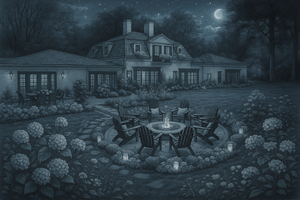
Tips for Success
Balance fragrance, color, and foliage texture for a garden that feels just as enchanting as it looks. Plant in groups of 3 to 5 for a more impactful nighttime display, and don’t be afraid to repeat key elements throughout the space. Reflective surfaces like white pebbles, pale paving stones, or glossy pottery can help bounce ambient moonlight back into the garden. Avoid bright or multicolored blooms that fade into gray under low light—stick with whites, creams, and silvers for the best effect. Finally, place a chair or bench where you can linger after dark. A moon garden is meant to be experienced slowly.
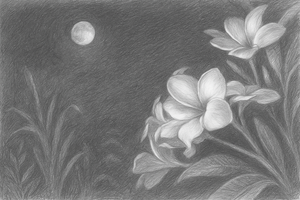
Why We Love It
A moon garden invites you to enjoy your landscape during its quietest hours. It’s the perfect space for reflection, relaxation, and reconnecting with nature on a different rhythm. With glowing flowers, soft scents, and shimmering foliage, this garden becomes a peaceful nighttime escape just steps from your door.
